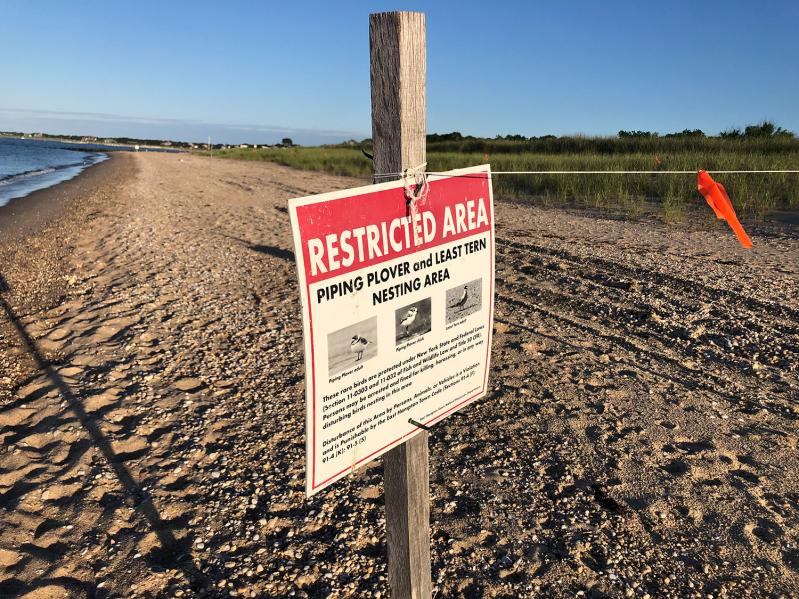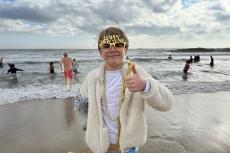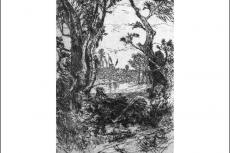Beachgoers will soon see temporary string fencing at sites along 18 miles of ocean and bay shoreline, as the federally and New York State-protected piping plover makes its annual return to East Hampton Town and Village.
Anna Soccorsi of the Natural Resources Department told the town board on March 21 that it is seeking seasonal volunteers to monitor sites where the shorebirds nest, the better to assist conservation efforts of the U.S. Fish and Wildlife Service and State Department of Environmental Conservation.
With populations in the northern Great Plains and the Great Lakes as well as in four “recovery units” on the Atlantic Coast, piping plovers nest on town beaches between March and September. There are only around 8,000 nesting pairs remaining in North America, Ms. Soccorsi told the board. “Ultimately, we’re striving to delist the Atlantic Coast population from the Endangered Species Act,” she said.
For that to happen, U.S. Fish and Wildlife Service criteria must be met: “We have to achieve and maintain 2,000 breeding pairs among the four recovery units,” one of them being New York-New Jersey, “for five consecutive years.” Of those, 575 pairs must come from the New York-New Jersey recovery unit. “Secondly, we have to achieve a mean productivity of 1.5 fledged chicks per breeding pair, again among the four recovery units, for five consecutive years.”
The New York-New Jersey recovery unit has not met these criteria, Ms. Soccorsi said. Its average over the past five years was 521 breeding pairs and 1.34 fledges per pair. Last year had 24 pairs successfully fledge in the town and village, and 26 chicks for a productivity rate of 1.08, slightly down from 2021 and below the target of 1.5 chicks per breeding pair. Georgica Pond, Atlantic Avenue Beach in Amagansett, Two Mile Hollow and Main Beach in East Hampton Village, and Sammys Beach in Northwest were the most productive sites last year.
Data collected are submitted to the D.E.C., which collates information from municipalities across Long Island.
Raccoons, gulls, and crows are among plovers’ predators, with human disturbance and coastal development also hindering their recovery. Plover nests are well camouflaged on the sand and easy to miss. Newly hatched chicks weigh less than a single scoop of ice cream, can walk and forage within minutes of hatching, and are “extremely mobile,” Ms. Soccorsi told the board, likening them to “little wind-up toys that make abrupt dashes and pauses, and they’ll pretty much use the entire beach area to forage or find places to rest.” Hence the symbolic string fencing to keep people, dogs, and vehicles away from their nesting sites.
When only nests are present, fencing is erected around the upper portion of the beach, “and we ask that people, dogs, and vehicles kindly respect these boundaries,” Ms. Soccorsi said. Once the chicks hatch, “because of their high mobility we extend the fencing to then be perpendicular to the water, so the entire area from the dune line to the water line is completely closed to vehicles and dogs, but people can still walk through the area.” Fencing remains only long enough to “ensure successful productivity,” she said.
New signs at nesting areas have been set up for this year, Ms. Soccorsi told the board, and motion-activated cameras will be installed near priority nesting areas to identify predators and other causes of abandoned nests and to confirm hatching and fledge dates.
Public outreach is also on the agenda for this year. The town is in discussions with Audubon New York to become part of the group’s Be a Good Egg initiative to reduce human threats to shorebirds “by encouraging people to find ways to share the shore with them,” she said. As part of that partnership, an art contest has been scheduled for the Amagansett School’s fifth grade. This will involve a presentation by Natural Resources staff, after which students will make informative signs, which will be weatherproofed and posted near nesting sites and at other locations.
Distribution of educational materials on priority bay and ocean beaches is also planned, with tables to be hosted by Natural Resources staff as well as Audubon New York and possibly U.S. Fish and Wildlife representatives.
After training, “we typically ask volunteers to help us monitor a specific site about once per week, and then share their observations with us,” Ms. Soccorsi said. Those interested in volunteering have been asked to call 631-324-0496 or send an email to [email protected].




